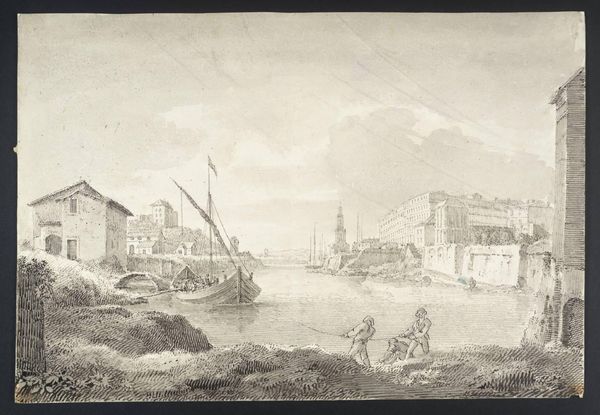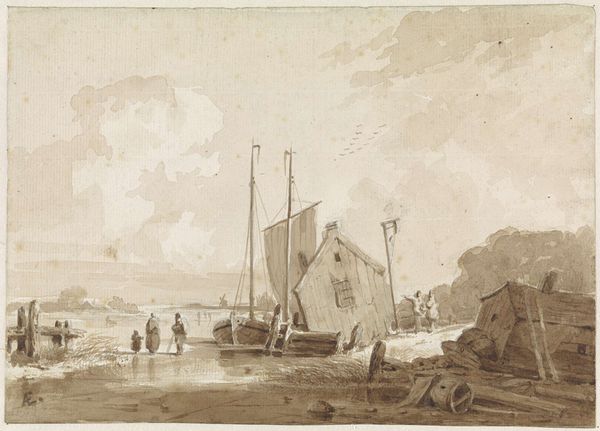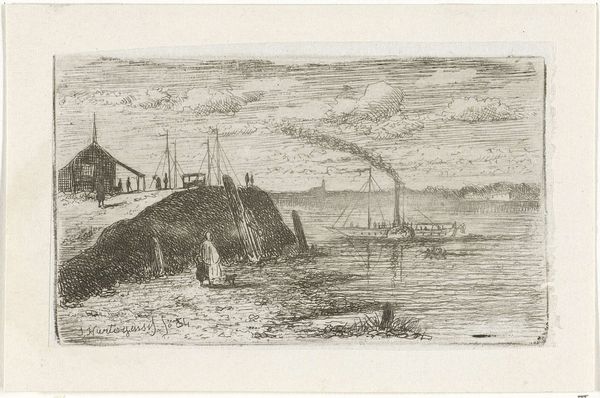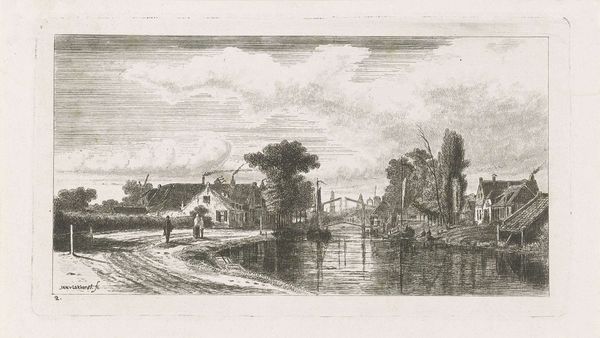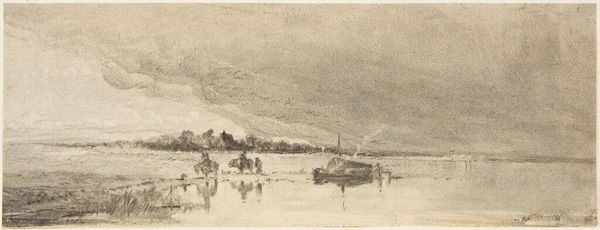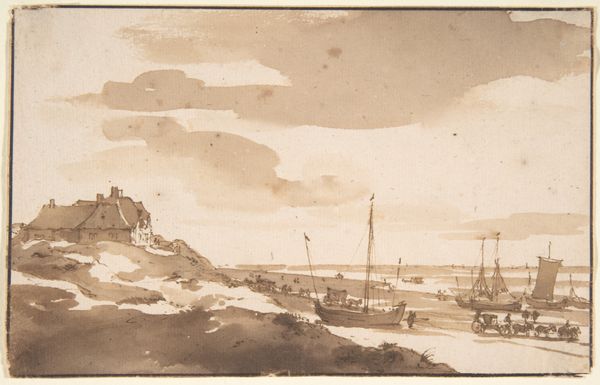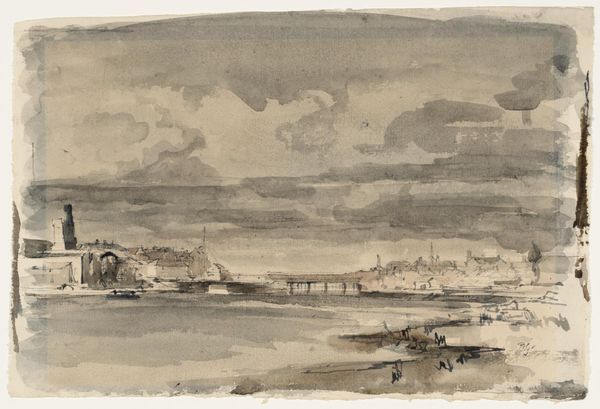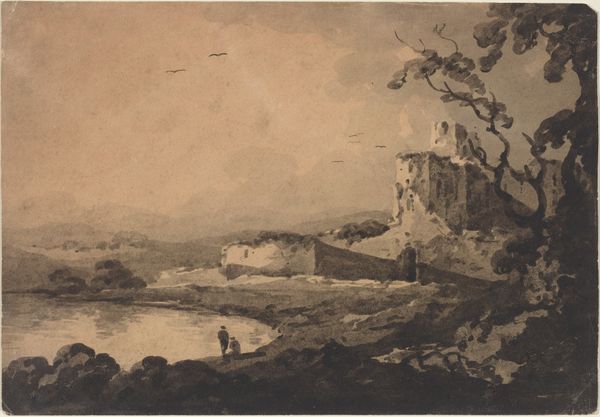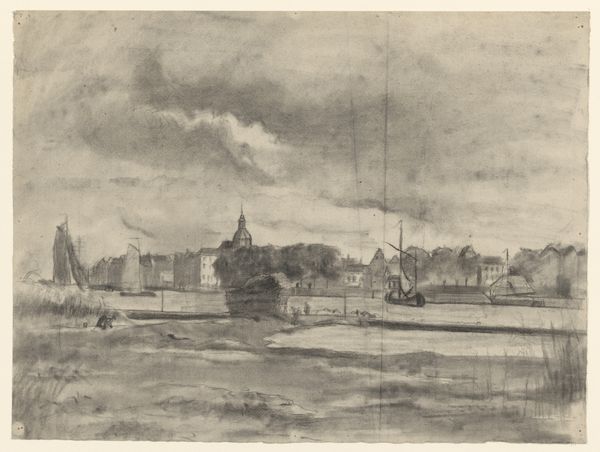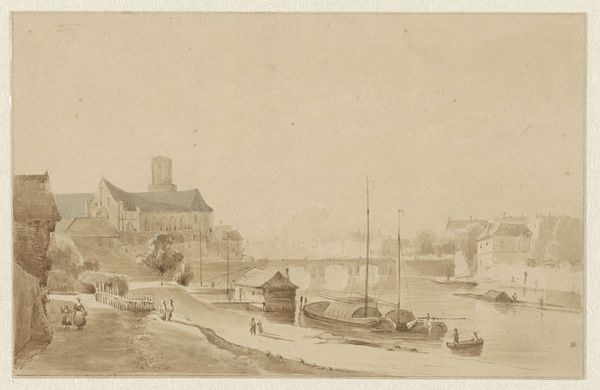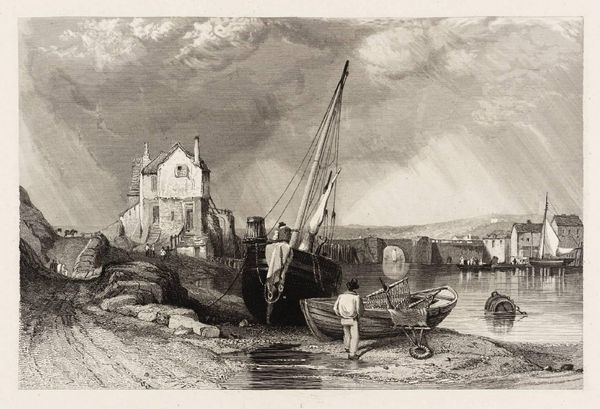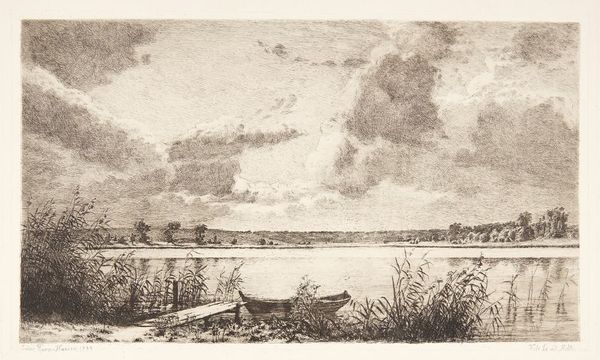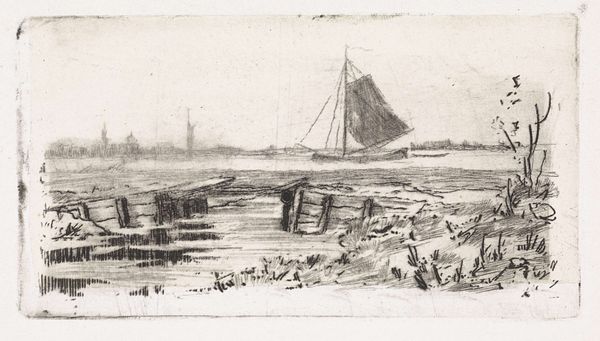
drawing, pencil
#
drawing
#
dutch-golden-age
#
landscape
#
river
#
pencil drawing
#
pencil
#
cityscape
#
realism
Dimensions: height 354 mm, width 572 mm
Copyright: Rijks Museum: Open Domain
Curator: What a beautifully rendered scene! This drawing, "Rivierlandschap met enige huizen en een watermolen"—or "River Landscape with Some Houses and a Watermill"—was created by Salomon Leonardus Verveer around 1870. The artist worked with pencil on paper to produce this image. Editor: It certainly is evocative. The monochromatic palette creates a very somber mood. And that heavy, dramatic sky looms over the scene... the people working in the water appear almost dwarfed by the environment. Curator: I'm particularly struck by Verveer's attention to the textures. Note how the pencil work distinguishes between the rough, weathered wood of the watermill and the reflections on the water's surface. This demonstrates a keen awareness of how labor and the elements shape these structures and, by extension, the lives connected to them. Editor: Yes, and if you look closer, those working in the water. Who are they? And how does access to resources and industry play out in this composition? The proximity to the watermill might imply specific labour opportunities or constraints for this community in 19th century Netherlands. What's their relationship to this industrialized setting? It prompts important questions about equity. Curator: Precisely. The drawing exemplifies a realist style. We see no romanticization of rural life here, only a pragmatic depiction of the landscape and its inhabitants engaged in daily labor. It really makes me wonder about the socioeconomic conditions of this small riverside community at that specific moment in the nineteenth century, considering the larger contexts of industry and urbanization. Editor: It serves as a visual record, really—of lives lived along this waterway. Also, I wonder how environmental changes, like shifting weather patterns, impact such a setting in both expected and unforeseen ways? These waterways can erode industries that depended on more reliable conditions; what recourse do the people have who subsist in these locales? The question of identity and belonging tied to the location of their community may also be impacted, not only when these residents stay in place but when circumstances or external systems force displacement from this specific geography. Curator: You're right to push us to consider how these details reflect wider socioeconomic dynamics. What appears at first glance a serene landscape is a testament to a whole nexus of connections bound up within systems of labour, identity, and social politics. It is impressive that the artist used the basic technology of pencil and paper in realizing it. Editor: Precisely! These understated depictions encourage critical perspectives on the history embedded within what we perceive as serene images, so thank you for calling this to our attention!
Comments
No comments
Be the first to comment and join the conversation on the ultimate creative platform.
